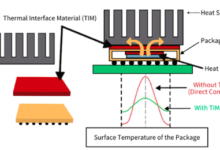Perfecting Performance: Exploring the World of Autotune Tools for Automotive Excellence

Introduction
The quest for automotive excellence often leads enthusiasts and professionals to explore various performance-enhancing tools. Among these, autotune tools stand out for their ability to fine-tune a vehicle’s engine parameters, optimizing performance, fuel efficiency, and driving experience. This comprehensive guide delves into the world of autotune tools, highlighting their benefits, applications, and the best options available in the market to help you perfect your vehicle’s performance.
Understanding Autotune Tools
What are Autotune Tools?
Autotune tools represent a technological marvel in the realm of automotive tuning, offering a sophisticated approach to engine calibration and optimization. Autotune tools are devices and software used to adjust and optimize a vehicle’s engine control unit (ECU) settings. These adjustments can enhance various aspects of vehicle performance, such as horsepower, torque, fuel efficiency, and overall drivability.
How Do They Work?
Autotune tools interface with a vehicle’s ECU to modify parameters such as air-fuel ratio, ignition timing, and boost pressure. By fine-tuning these settings, the tools can optimize engine performance based on specific goals, whether it’s increasing power output, improving fuel economy, or achieving a smoother ride.
Types of Autotune Tools
Handheld Tuners
Handheld tuners are portable devices that connect to a vehicle’s OBD-II port. They are user-friendly and typically come with preloaded tuning maps that can be easily installed to enhance performance.
Piggyback Systems
Piggyback systems are modules that attach to the vehicle’s existing ECU. They work alongside the stock ECU to override certain signals, allowing for custom tuning without altering the factory settings permanently.
Engine Control Units (ECUs)
Standalone ECUs replace the factory ECU entirely, offering extensive customization options for advanced users. These units provide the highest level of control over engine parameters but require significant expertise to install and tune effectively.
Benefits of Using Autotune Tools
Improved Performance
Autotune tools can significantly boost a vehicle’s performance by optimizing engine parameters for maximum horsepower and torque. This results in a more responsive and powerful driving experience.
Enhanced Fuel Efficiency
By fine-tuning the air-fuel ratio and ignition timing, autotune tools can improve fuel efficiency. This is particularly beneficial for daily drivers looking to reduce fuel costs without sacrificing performance.
Better Engine Longevity
Proper tuning can lead to more efficient engine operation, reducing wear and tear and potentially extending the engine’s lifespan. This is achieved by ensuring that the engine runs within optimal parameters.
Popular Autotune Tools
COBB Accessport
The COBB Accessport is a widely used handheld tuner known for its user-friendly interface and extensive support for various vehicle models. It offers preloaded maps and custom tuning options.
Hondata FlashPro
Hondata FlashPro is popular among Honda and Acura enthusiasts. It provides comprehensive tuning capabilities, including real-time data logging and extensive customization options.
SCT Performance Tuners
SCT Performance Tuners offer robust tuning solutions for Ford, GM, and Chrysler vehicles. They are known for their easy-to-use interface and powerful tuning capabilities.
How to Choose the Right Autotune Tool
The significance of autotune tools in the automotive industry cannot be overstated. These tools play a crucial role in perfecting vehicle performance and achieving automotive excellence. Here are some key reasons why autotune tools are indispensable:
Assessing Your Vehicle’s Needs
Determine what you aim to achieve with autotuning, such as increased power, better fuel economy, or improved drivability. Your goals will guide your choice of the autotune tool.
Compatibility Considerations
Ensure that the autotune tool you choose is compatible with your vehicle’s make, model, and year. Check for support and updates from the manufacturer to maintain compatibility with future ECU updates.
Budget and Features
Autotune tools come in various price ranges. Consider your budget and the features offered by different tools. Higher-end models provide more customization and advanced features but may come at a higher cost.
Top Brands for Autotune Tools
COBB Tuning
COBB Tuning is renowned for its Accessport line, offering comprehensive tuning solutions for a wide range of vehicles. Their tools are user-friendly and supported by a robust community of enthusiasts.
Hondata
Hondata specializes in tuning solutions for Honda and Acura vehicles. Their FlashPro tool is highly regarded for its precision and extensive tuning capabilities.
SCT Performance
SCT Performance provides powerful tuning tools for American vehicles. Their tuners are known for their reliability, ease of use, and ability to deliver significant performance gains.
DIY vs. Professional Autotuning
Pros and Cons of DIY Tuning
Pros:
- Cost-effective compared to professional services
- Provides hands-on experience and knowledge
- Flexibility to make adjustments at any time
Cons:
- Requires a learning curve and technical knowledge
- Risk of improper tuning leading to engine damage
- Limited to the capabilities of the autotune tool
Benefits of Professional Tuning
Professional tuning ensures optimal performance and safety. Experts use advanced tools and techniques to fine-tune your vehicle, considering factors that may not be apparent to DIY tuners.
When to Seek Professional Help
Seek professional tuning when making significant modifications to your vehicle, aiming for maximum performance gains, or if you lack the technical knowledge required for safe and effective tuning.
Implementing Autotune Tools
Step-by-Step Installation Guide
- Read the Manual: Start by thoroughly reading the user manual provided with your autotune tool.
- Connect the Device: Plug the autotune tool into your vehicle’s OBD-II port.
- Backup Factory Settings: Always backup your vehicle’s factory ECU settings before making any changes.
- Select Tuning Map: Choose a preloaded map or create a custom map based on your performance goals.
- Upload the Tune: Follow the instructions to upload the new tune to your vehicle’s ECU.
- Test Drive: Take your vehicle for a test drive to ensure the tune works as expected.
Common Mistakes to Avoid
- Ignoring Safety Precautions: Always follow safety guidelines to prevent damage to your vehicle’s ECU.
- Skipping the Backup Step: Not backing up factory settings can lead to irreversible changes.
- Over-Tuning: Pushing the limits too far can cause engine damage. Stick to recommended settings.
Post-Installation Tips
- Monitor Performance: Regularly check your vehicle’s performance and make adjustments as needed.
- Stay Updated: Keep your autotune tool updated with the latest firmware and maps.
- Consult Experts: When in doubt, consult with a professional tuner to ensure optimal results.
Case Studies: Successful Autotuning Stories
Increased Horsepower
A car enthusiast used a COBB Accessport to tune their Subaru WRX, resulting in a 20% increase in horsepower. The tuning process involved optimizing the air-fuel ratio and boost pressure, significantly enhancing the car’s performance.
Enhanced Torque
An automotive shop utilized Hondata FlashPro to tune a Honda Civic Type R. The tuning adjustments improved torque by 15%, leading to better acceleration and overall drivability.
Improved Drivability
A professional tuner used SCT Performance tools to fine-tune a Ford Mustang GT. The adjustments led to smoother throttle response and better fuel efficiency, greatly enhancing the driving experience.
Emerging Trends in Autotune Tools
AI-Powered Tuning Solutions
Artificial intelligence is being integrated into autotune tools to provide smarter, real-time adjustments. AI can analyze driving patterns and automatically fine-tune engine parameters for optimal performance.
Real-Time Data Analytics
Modern autotune tools are incorporating real-time data analytics to provide detailed insights into vehicle performance. This allows for more precise tuning and quicker adjustments based on live data.
Cloud-Based Tuning Platforms
Cloud-based tuning platforms enable users to store, share, and download tuning maps from anywhere. This enhances collaboration and allows for remote tuning services, making it easier to achieve the desired performance.
FAQs About Autotune Tools
What is the best autotune tool for beginners?
The COBB Accessport is often recommended for beginners due to its user-friendly interface and extensive support.
Can autotune tools damage my engine?
If used improperly, autotune tools can potentially damage your engine. Always follow manufacturer guidelines and, if unsure, consult a professional.
How often should I retune my vehicle?
Retuning frequency depends on your driving habits and any modifications made to your vehicle. Regularly updating your tune ensures optimal performance.
Are autotune tools legal?
Autotune tools are generally legal, but some modifications may not comply with local emissions regulations. Check local laws and regulations before tuning.
Do autotune tools void warranties?
Using autotune tools can void manufacturer warranties. It’s advisable to check with your vehicle manufacturer or dealer before making any modifications.
How much do autotune tools cost?
Prices vary widely, ranging from a few hundred to several thousand dollars, depending on the tool’s capabilities and features.
Conclusion
Autotune tools offer a powerful way to enhance your vehicle’s performance, fuel efficiency, and drivability. By understanding the different types of tools, their benefits, and how to choose and implement them, you can achieve automotive excellence. Whether you’re a seasoned tuner or a beginner, exploring the world of autotune tools can unlock your vehicle’s true potential.






